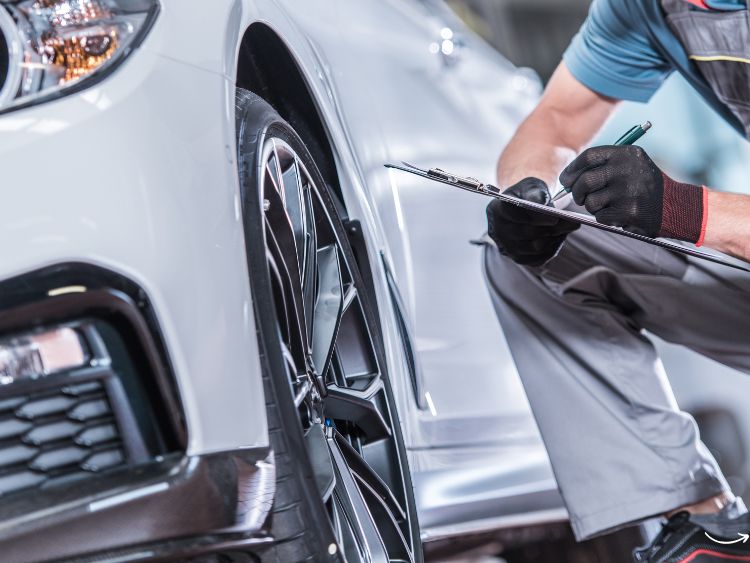In the world of automotive customization and repair, paint plays a crucial role. Whether you’re restoring a classic car, fixing minor scratches, or giving your vehicle a brand-new look, finding the right automotive paint supply is essential. But with the variety of products available, where do you even begin? Let’s dive into the ins and outs of automotive paint supplies to help you understand the essentials, and find the best products to meet your needs.
What is Automotive Paint Supply?
Automotive paint supply refers to the range of products used to paint and refinish vehicles. This includes paints, primers, clear coats, and various accessories that help in achieving that flawless finish. These supplies are not limited to just paint. They also encompass tools like spray guns, sanding equipment, and protective gear, ensuring that the painting process is smooth and professional.
Why is the right paint supply important? Simply put, the quality of your paint job can make or break the appearance of your vehicle. A poorly executed job with low-quality products will leave your car looking worse than before, while high-quality automotive paint can restore and enhance the vehicle’s appearance for years.
Types of Automotive Paints
When shopping for automotive paint, you’ll encounter several types, each with its own unique properties and applications.
- Acrylic Lacquer
Acrylic lacquer is a traditional type of automotive paint that has been used for decades. It offers a high-gloss finish and is relatively easy to apply. However, it’s not as durable as other options and can require frequent touch-ups. - Acrylic Enamel
This type of paint is more durable than lacquer and dries to a hard, glossy finish. It’s commonly used in automotive paint supply shops because it’s tougher and more resilient to the elements. - Urethane Paint
Urethane is considered one of the best automotive paints due to its durability and smooth finish. It’s long-lasting, highly resistant to UV rays, and can be used with both spray guns and aerosol cans. This type of paint is favored by professionals because it provides a more polished and long-lasting result. - Water-based Paint
With environmental concerns on the rise, water-based paints are becoming more popular. These paints are eco-friendly and safer to use, but they still offer great coverage and durability. However, they may take longer to dry compared to traditional options.
Essential Tools and Supplies for Automotive Painting
Choosing the right automotive paint supply doesn’t just stop at selecting the paint. You’ll need a variety of tools and products to achieve a smooth, professional finish.
- Spray Gun: A high-quality spray gun ensures even application and helps in achieving a consistent coat of paint.
- Sanding Equipment: Preparing the surface is key to a great paint job. Sanding equipment helps remove rust, old paint, and imperfections from the car’s surface.
- Primer: A good primer is essential to ensure that the paint adheres to the car’s surface. It also helps to smooth out any imperfections.
- Clear Coat: After applying the paint, a clear coat is necessary to protect it from the elements and give it a glossy finish.
- Masking Tape and Paper: To avoid getting paint on parts of the vehicle that don’t need it, masking tape and paper are used to cover windows, trim, and other areas.
- Respirator Mask: Safety should never be an afterthought. A respirator mask protects you from inhaling harmful chemicals during the painting process.
Step-by-Step Guide to Using Automotive Paint Supplies
Here’s a quick breakdown of the process to help you get the best results when using automotive paint supplies:
- Preparation: Start by washing the vehicle to remove dirt and debris. After that, sand the surface to create a smooth base for the paint to adhere to. This is where your sanding equipment comes in handy.
- Priming: Apply a coat of primer to the sanded surface. This ensures better adhesion and covers any minor imperfections.
- Painting: Once the primer has dried, it’s time to apply the paint. Use a spray gun for a smooth and even finish. Multiple thin coats are better than one thick coat, as it reduces the chances of drips and uneven coverage.
- Clear Coat: After the paint has dried, apply a clear coat for protection and to enhance the gloss.
- Buffing and Polishing: Once the clear coat has cured, buff and polish the surface to give it that showroom finish.
Frequently Asked Questions
What type of paint should I use for my car?
It depends on your needs. If you want a high-quality, durable finish, urethane paint is your best bet. For more eco-friendly options, water-based paint is a good choice.
Do I need to sand the car before painting?
Absolutely. Sanding ensures a smooth surface for the paint to adhere to, which is essential for a professional-looking finish.
How many coats of paint should I apply?
Typically, 2-3 coats of paint followed by a clear coat is sufficient. However, it’s important to follow the manufacturer’s recommendations.
Can I paint my car at home?
Yes, but it requires the right automotive paint supply, tools, and a controlled environment to avoid dust and other contaminants from ruining the finish.
Conclusion
Selecting the right automotive paint supply can make all the difference in the final result of your paint job. Whether you’re a DIY enthusiast or a seasoned professional, investing in high-quality supplies and tools is the key to achieving a long-lasting, flawless finish. With proper preparation, attention to detail, and the right products, you can give your car a fresh, polished look that turns heads wherever you go.







